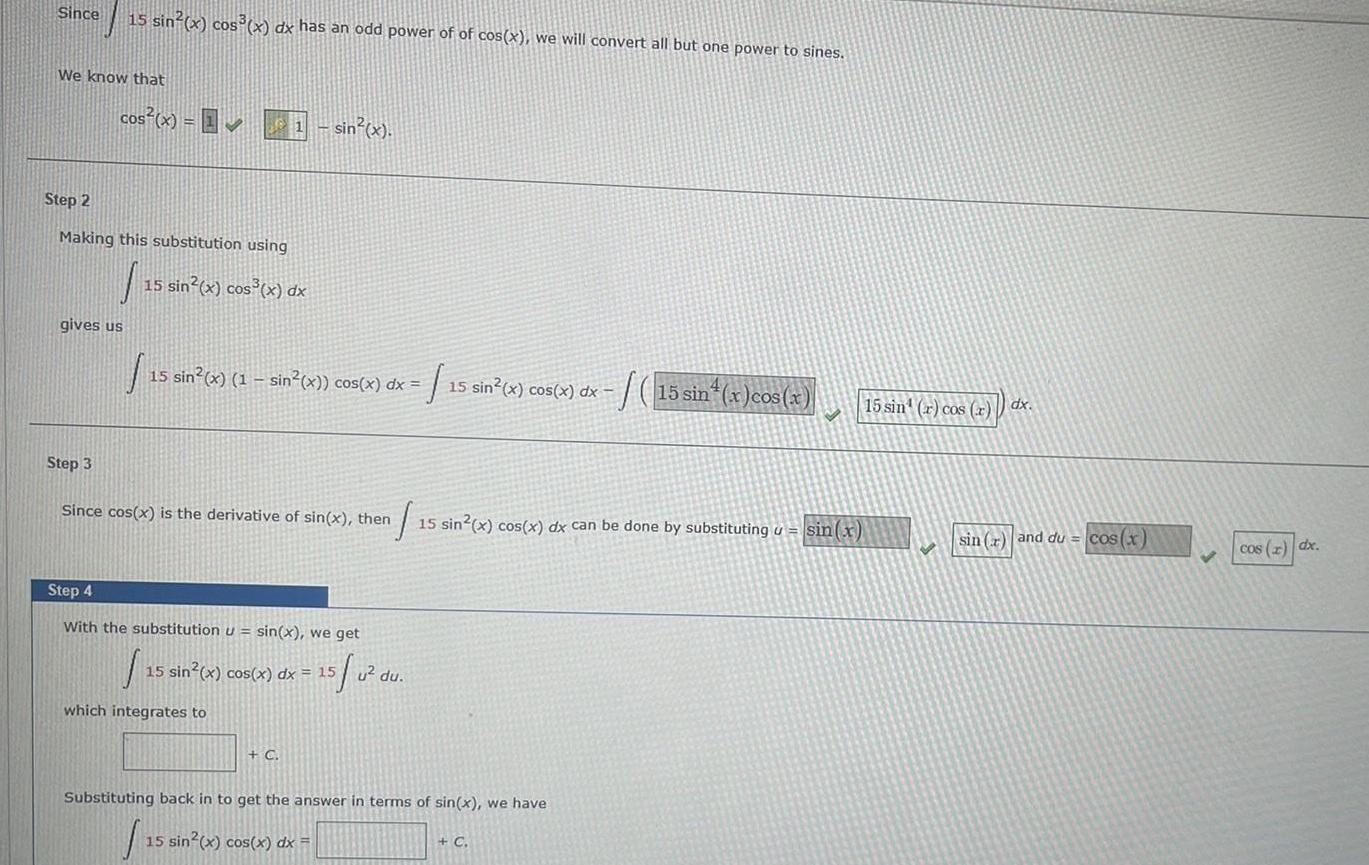Answered step by step
Verified Expert Solution
Question
1 Approved Answer
Since 15 sin(x) cos(x) dx has an odd power of of cos(x), we will convert all but one power to sines. We know that

Since 15 sin(x) cos(x) dx has an odd power of of cos(x), we will convert all but one power to sines. We know that COS(x) = 1 - sin(x). Step 2 Making this substitution using gives us | 15 15 sin(x) cos(x) dx 15 sin(x) (1-sin(x)) cos(x) dx = 15 sin(x) cos(x) dx 15 sin(x)cos(x) 15 sin (r) cos (r)dx. Step 3 Since cos(x) is the derivative of sin(x), then 15 sin(x) cos(x) dx can be done by substituting u=sin(x) sin(x) and du= cos(x) cos (z) dx. Step 4 With the substitution u = sin(x), we get 15 sin(x) cos(x) dx = 15 = 15/u 2 du. which integrates to + C. Substituting back in to get the answer in terms of sin(x), we have 15 sin(x) cos(x) dx = + C.
Step by Step Solution
There are 3 Steps involved in it
Step: 1

Get Instant Access to Expert-Tailored Solutions
See step-by-step solutions with expert insights and AI powered tools for academic success
Step: 2

Step: 3

Ace Your Homework with AI
Get the answers you need in no time with our AI-driven, step-by-step assistance
Get Started


